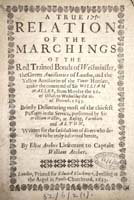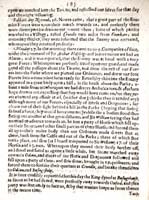 The town of Farnham had been garrisoned for Parliament since the beginning of the war, but in October 1643 a parliamentary army under Sir William Waller began to muster at Farnham.
The town of Farnham had been garrisoned for Parliament since the beginning of the war, but in October 1643 a parliamentary army under Sir William Waller began to muster at Farnham.
At the beginning of November, Waller set out from Farnham to take Basing House, near Basingstoke, which was held for the king by the Marquis of Winchester. However, due to the foul weather and mutiny in the London Regiments, he was forced to abandon the siege. Later in the month a Royalist Army, under Sir Ralph Hopton, advanced through Hampshire and, on the 26th, was quartered around Odiham, Crondall and Long Sutton. According to Hopton, 'While these two armies lay at Odiham and Farnham scarce a day passed without some action'.
On the 27th, the Royalists advanced on Farnham and drew up in Farnham Park. However, according to Waller,
 'At Farnham God appeared wonderfully for me, when the Lord Hopton drew up his whole army within demi-Culverin shot [550 metres] of me… [with] at least eight thousand horse and foot… I was not able to face him with two thousand. In that extremity the Lord took the opportunity to show himself for me, by sending a mist all the morning, that by reason thereof the enemy durst not give on.'
'At Farnham God appeared wonderfully for me, when the Lord Hopton drew up his whole army within demi-Culverin shot [550 metres] of me… [with] at least eight thousand horse and foot… I was not able to face him with two thousand. In that extremity the Lord took the opportunity to show himself for me, by sending a mist all the morning, that by reason thereof the enemy durst not give on.'
According to Hopton,
'Sir Wm. Waller, resolving not to hazard a battle drew out his foot into the little Park, close under the Castle, and kept his horse [cavalry] close, playing only with his cannon out of the Castle, and resolving, as he did afterwards, very soldier like, to take his advantage upon our retreat.'
Waller would not be drawn into a battle because he had to disperse his army in towns around West Surrey through lack of provisions to feed his men. With the area laid waste and the Parliamentarians refusing to give battle, Hopton had no option but to withdraw. It was now that Waller sent his cavalry to pursue the Royalists who took a number of prisoners, including Bartholomew Ellicot, who had recently changed sides and so was hanged in the market place at Farnham as an example.
 With the campaigning season almost over, Hopton decided to disperse his army into 'winter quarters', including Alton which was stormed by Waller's army on 13 December. In January 1644, Waller retook Arundel Castle, and then on 29 March he defeated Hopton at the battle of Cheriton in Hampshire.
With the campaigning season almost over, Hopton decided to disperse his army into 'winter quarters', including Alton which was stormed by Waller's army on 13 December. In January 1644, Waller retook Arundel Castle, and then on 29 March he defeated Hopton at the battle of Cheriton in Hampshire.
Farnham would continue to be garrisoned by Parliamentary soldiers until the end of the First Civil War in 1646. In 1648 after the Second Civil War, the castle was ordered to be 'made indefensible' in case it was seized by Royalist sympathisers, and the following year King Charles stayed in the town on his way to his trial and eventual execution.
Images
Select image to view a larger version.
- Both sides during the Civil War published pamphlets for propaganda purposes. This one by Lieutenant Elias Archer describes the movements of the several regiments of London Trained Bands (militia) between 16 October and 16 December 1643 (reference G52/6/2/1)
- Excerpt from Elias Archer's pamphlet on the Royalist advance on Farnham (reference G52/6/2/1)
- 'Prospect of Farnham'. Although dated 1723 it shows the town as it probably appeared during the Civil War (reference PX/64/67)

